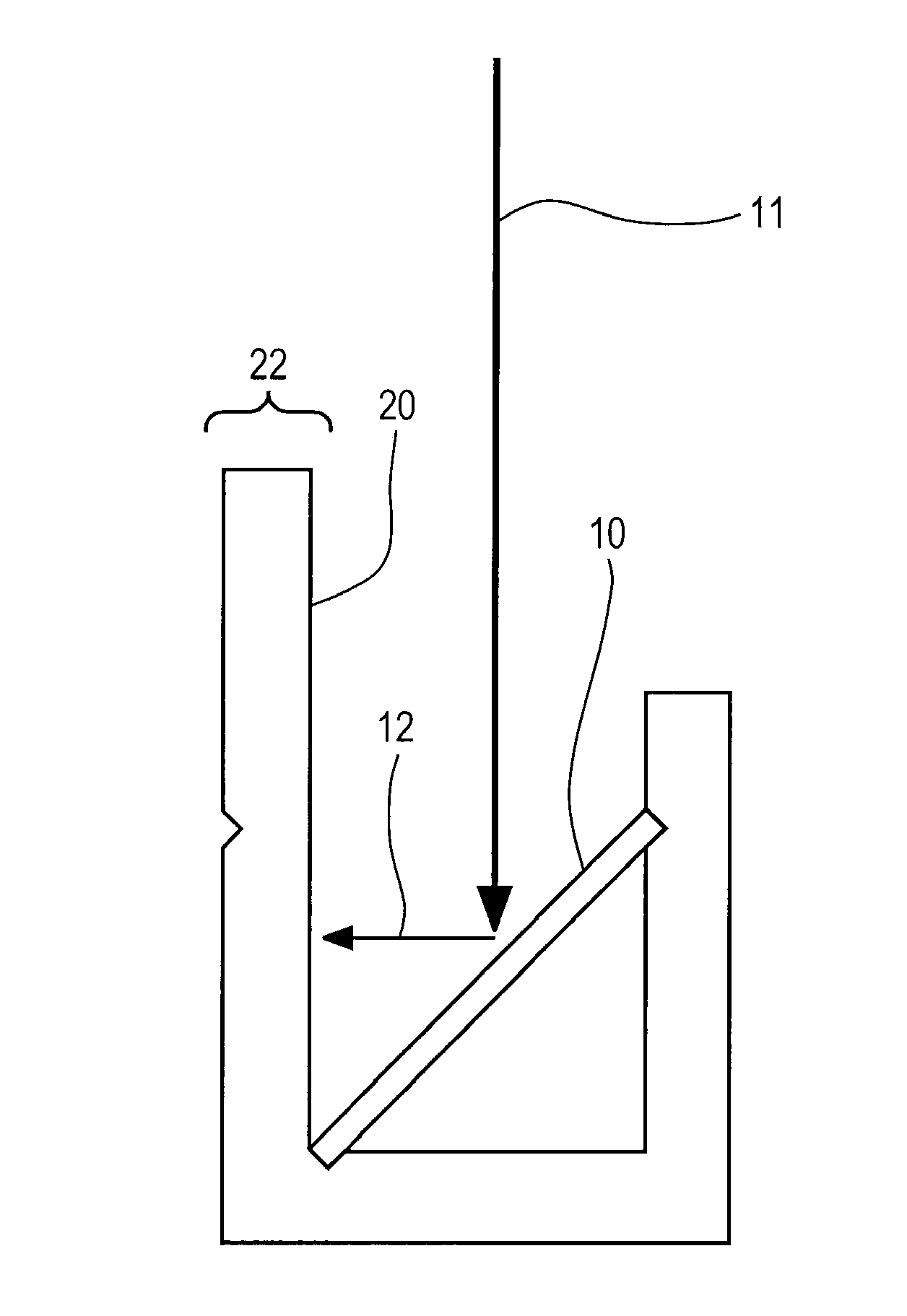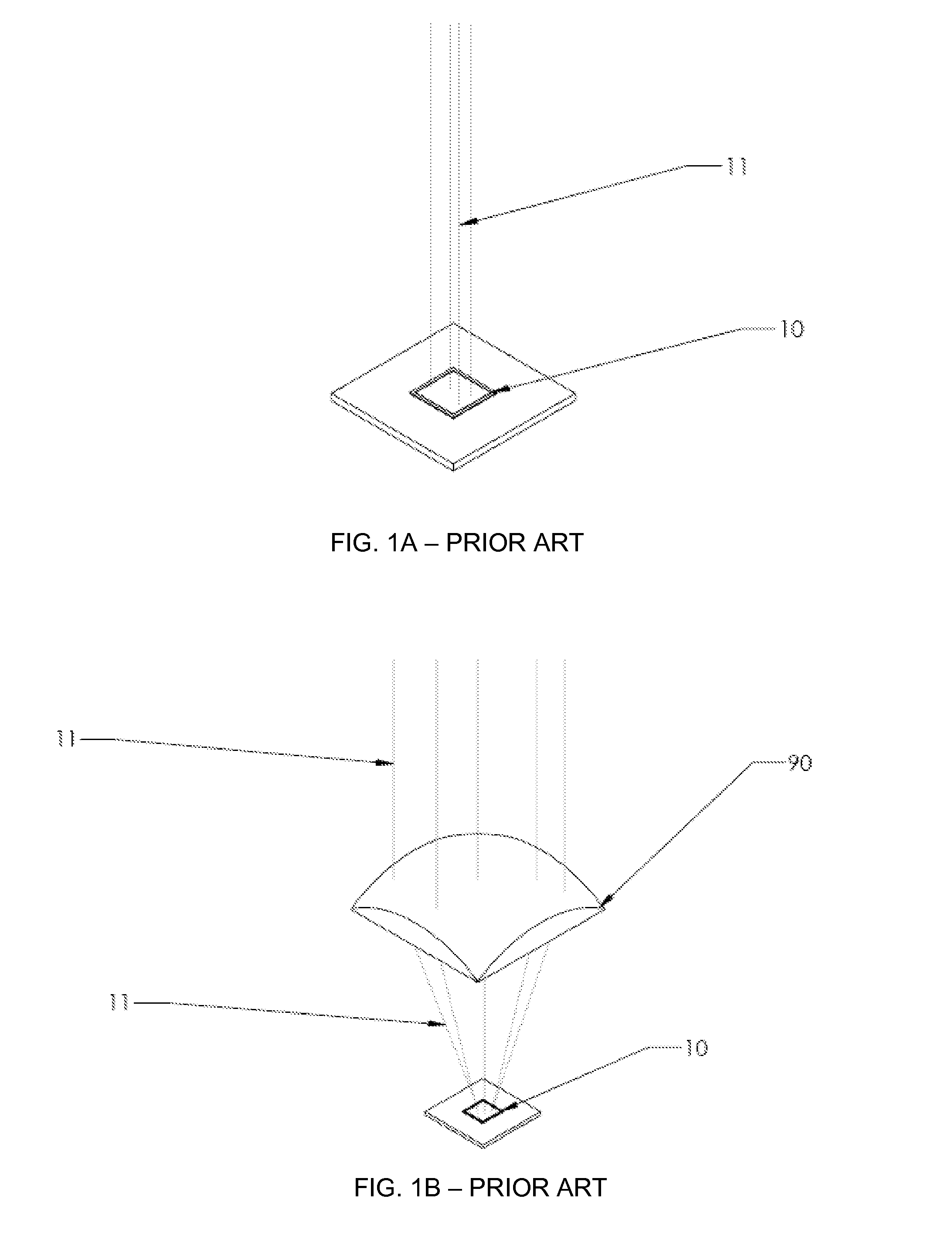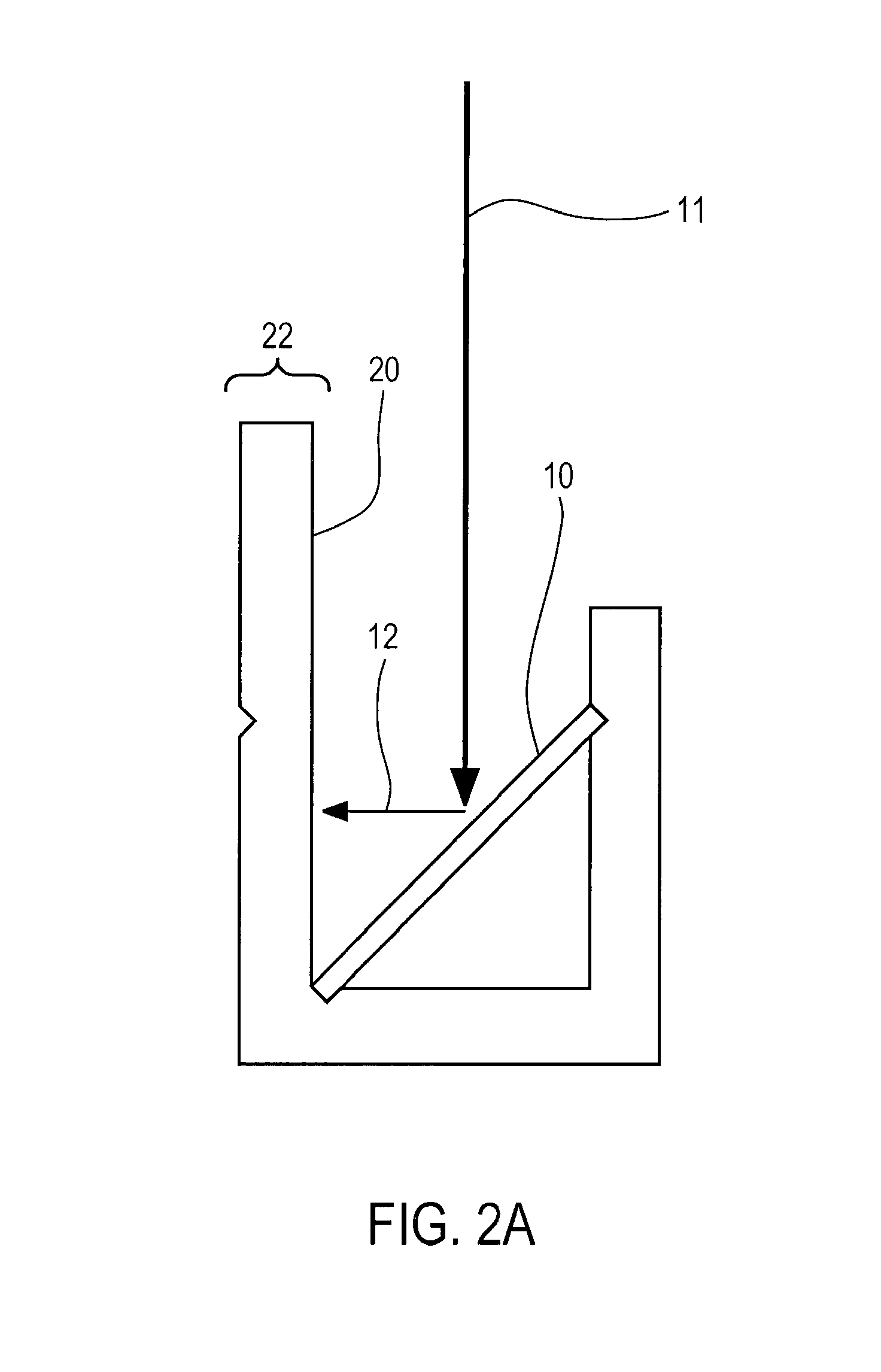Reflection-Safe Receiver for Power Beaming
a receiver and power beam technology, applied in the field of power beam receivers, can solve the problems of power beams exceeding human exposure limits, affecting the safety of people proximate to power beams, and unsafe use of prior power beam systems around people without eye protection
- Summary
- Abstract
- Description
- Claims
- Application Information
AI Technical Summary
Problems solved by technology
Method used
Image
Examples
Embodiment Construction
[0027]FIG. 2A is an illustration of one power conversion element 10 of a power beam receiver arranged to reflect incident light 11 into a baffle 20, in accordance with one embodiment. In this embodiment, power receiving element 10 is tilted with respect to the incoming beam 11. For illustration purposes, only a single power conversion element 10 with a single baffle is shown, but multiple power conversion elements arranged at the same or different angles with multiple baffles can be included in a power beam receiver, for example in a line or grid pattern.
[0028]For many practical power beaming systems, power receiving element 10 will be one or more photodiodes. All light reflected 12 from its surface is trapped by a baffle 20. Baffle 20 can be made of any material that overwhelmingly absorbs light at least at the wavelength at which the system operates. Example materials include black anodized aluminum or a rigid material covered in a light-absorptive cloth. In FIG. 2A, there is no l...
PUM
 Login to View More
Login to View More Abstract
Description
Claims
Application Information
 Login to View More
Login to View More - R&D
- Intellectual Property
- Life Sciences
- Materials
- Tech Scout
- Unparalleled Data Quality
- Higher Quality Content
- 60% Fewer Hallucinations
Browse by: Latest US Patents, China's latest patents, Technical Efficacy Thesaurus, Application Domain, Technology Topic, Popular Technical Reports.
© 2025 PatSnap. All rights reserved.Legal|Privacy policy|Modern Slavery Act Transparency Statement|Sitemap|About US| Contact US: help@patsnap.com



